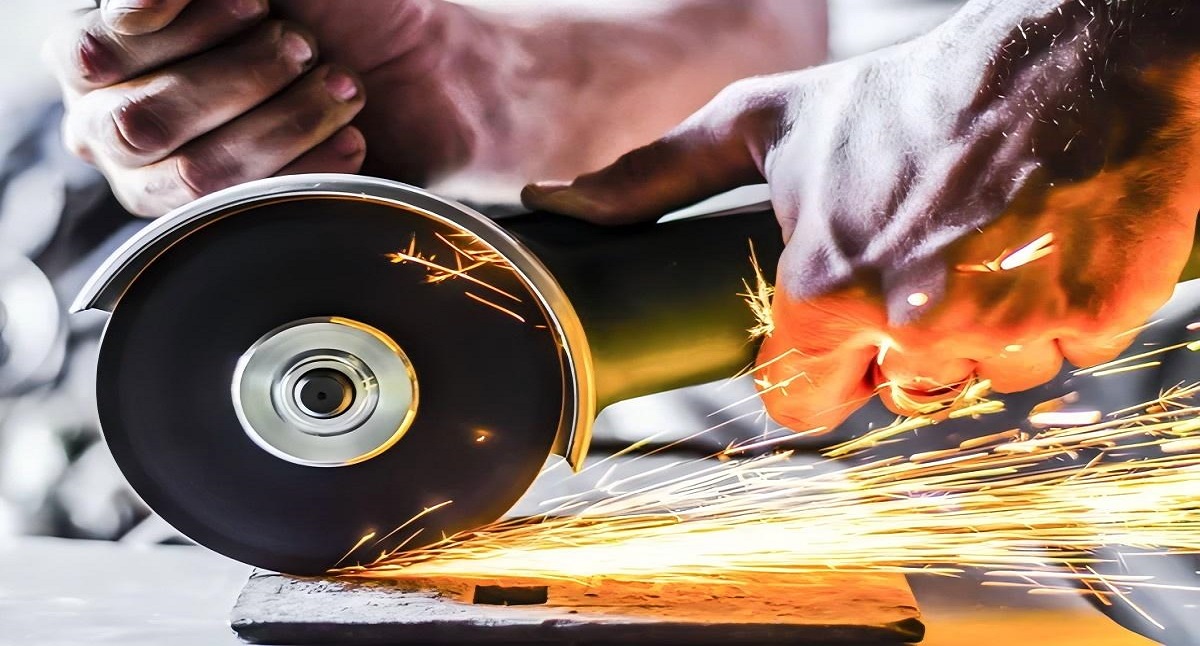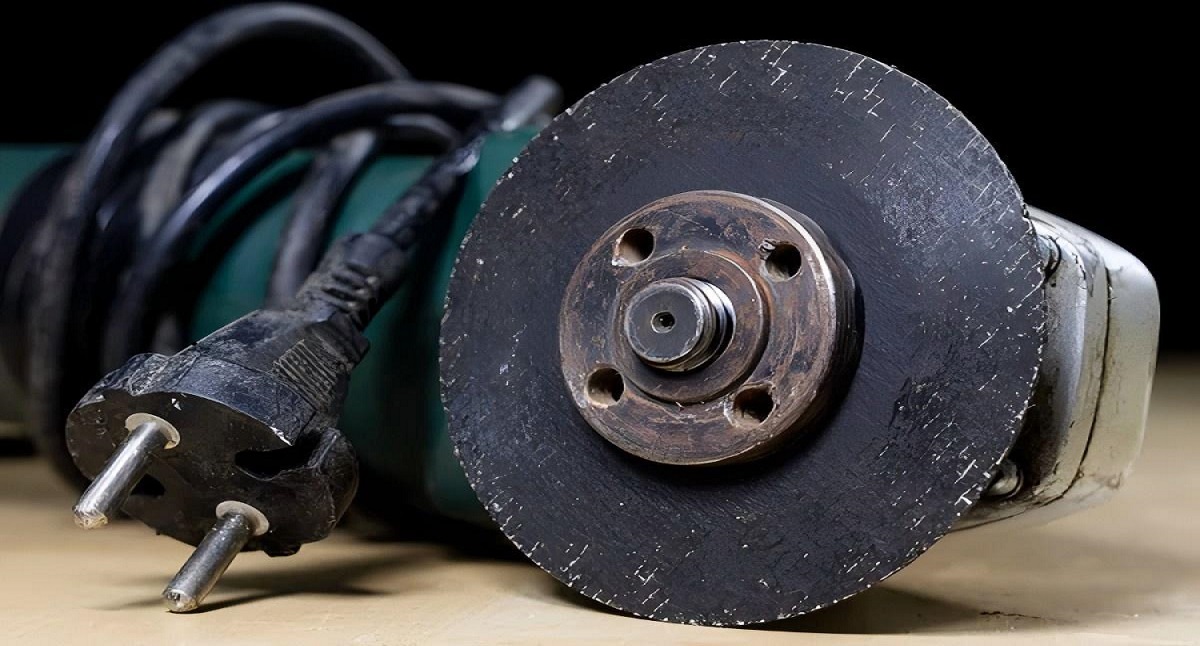Abrasive discs are essential tools in a variety of industries, from metalworking to woodworking. They are used to cut, grind, and polish materials, making them indispensable in many manufacturing processes. However, like any tool, abrasive discs have a limited lifespan and need to be replaced when they no longer perform effectively. Using a worn-out abrasive disc can lead to poor quality work, increased risk of accidents, and even damage to your equipment. In this article, we will explore the key signs that indicate it’s time to replace your abrasive disc, ensuring you maintain optimal performance and safety in your operations.
1. Reduced Cutting or Grinding Efficiency
One of the most obvious signs that it’s time to replace your abrasive disc is a noticeable reduction in cutting or grinding efficiency. When an abrasive disc is new, it works quickly and effectively, making clean cuts or smooth grinds with minimal effort. However, as the disc wears down, its cutting edges become dull, and it loses its ability to remove material efficiently. If you find that you’re applying more pressure than usual or taking longer to complete a task, it’s a clear indication that the disc has lost its sharpness and needs to be replaced.
Symptoms of Reduced Efficiency:
- The disc takes longer to cut or grind through materials.
- You need to apply more force to achieve the desired result.
- The finished surface is rougher than usual or has visible imperfections.
2. Visible Wear and Tear
Abrasive discs are subjected to intense wear during use, and over time, this wear becomes visible. Regularly inspecting your discs for signs of damage is crucial to prevent accidents and ensure quality work. Look for the following signs of wear and tear:
Cracks and Chips:
Cracks and chips in the abrasive disc are a serious safety concern. Even small cracks can lead to the disc breaking apart during use, posing a significant hazard to the operator. If you notice any cracks or chips on the surface or edges of the disc, it’s time to replace it immediately.
Glazing:
Glazing occurs when the abrasive material on the disc becomes clogged with debris or resin, creating a smooth, shiny surface. A glazed disc loses its abrasiveness and becomes ineffective at cutting or grinding. If you notice a glossy appearance on the disc, it’s a sign that it needs to be replaced.
Worn Edges:
The edges of the abrasive disc are particularly susceptible to wear. Over time, the edges can become rounded or uneven, reducing the disc’s effectiveness. If the edges of your disc are no longer sharp and defined, it’s time for a replacement.
3. Unusual Vibrations or Sounds
During operation, abrasive discs should run smoothly and quietly. If you start noticing unusual vibrations or sounds while using the disc, it could indicate that the disc is damaged or unbalanced. Vibrations can occur when the disc is worn unevenly or when there’s a structural defect. Similarly, strange noises like grinding, scraping, or rattling can signal that the disc is no longer functioning correctly.
Causes of Vibrations and Sounds:
- Unbalanced Disc: As the disc wears down, it can become unbalanced, leading to vibrations.
- Damage: Cracks, chips, or other structural damage can cause the disc to produce abnormal sounds.
- Loose Mounting: Ensure that the disc is securely mounted on the tool. A loose disc can wobble, creating vibrations and noise.
4. Burn Marks or Discoloration on Workpieces
If you notice burn marks or discoloration on the material you’re working on, it’s a strong indication that your abrasive disc is no longer performing as it should. Burn marks are typically caused by excessive heat generated during the cutting or grinding process. This can happen when the disc is worn out and requires more force to cut, causing friction and heat build-up.
Common Causes of Burn Marks:
- Dull Disc: A dull disc generates more heat because it struggles to cut through the material.
- Glazed Disc: As mentioned earlier, a glazed disc can cause heat build-up, leading to burn marks.
- Improper Speed: Ensure that you’re using the correct speed for the disc and material. Operating at the wrong speed can cause overheating.
5. Inconsistent Performance
Abrasive discs are designed to deliver consistent performance throughout their lifespan. If you notice that the disc is no longer producing uniform results, it’s a sign that it’s reaching the end of its useful life. Inconsistent performance can manifest in several ways:
Uneven Cutting or Grinding:
If the disc is no longer cutting or grinding evenly across its surface, it can result in uneven edges or surfaces on your workpiece. This is often due to uneven wear on the disc, which can occur over time.
Frequent Tool Jamming:
A disc that’s worn out or damaged may cause the tool to jam frequently, interrupting your workflow and increasing the risk of injury. If you’re experiencing frequent jamming, it’s time to inspect the disc and consider replacing it.
6. Disc Thickness Reduction
As abrasive discs are used, they gradually wear down, becoming thinner over time. While some reduction in thickness is normal, excessive thinning can compromise the structural integrity of the disc, making it prone to breakage. It’s important to monitor the thickness of your discs regularly and replace them before they become too thin to be safe.
Measuring Disc Thickness:
- Visual Inspection: Regularly check the disc’s thickness, especially near the edges. If it appears significantly thinner than when new, it’s time to replace it.
- Calipers: For more precise measurement, use calipers to measure the disc’s thickness and compare it to the manufacturer’s specifications.
7. Increased Heat Generation
Excessive heat generation during cutting or grinding is a clear sign that the abrasive disc is no longer functioning efficiently. As the disc wears down, it becomes less effective at removing material, leading to increased friction and heat. This not only affects the quality of your work but can also damage the material and the tool itself.
Indicators of Increased Heat:
- Hot Workpiece: If the material you’re working on becomes unusually hot to the touch, it’s a sign of excessive heat generation.
- Smoke: Visible smoke during operation is a clear indicator that the disc is generating too much heat.
- Discoloration: Look for discoloration on both the disc and the workpiece, as this can indicate overheating.
8. Safety Concerns
Safety should always be a top priority when using abrasive discs. Over time, discs can develop structural weaknesses that make them unsafe to use. Regular inspection and timely replacement are crucial to preventing accidents. Here are some safety concerns to watch for:
Loose or Worn Mounting Hole:
The mounting hole in the center of the disc can wear out over time, leading to a loose fit on the tool. A loose disc is more likely to wobble or detach during operation, creating a significant safety hazard.
Disintegration or Fragmentation:
If you notice that small pieces of the disc are breaking off during use, it’s a clear sign that the disc is deteriorating and should be replaced immediately.
Expired Shelf Life:
Abrasive discs have a shelf life, and using an expired disc can be dangerous. Always check the manufacturer’s expiration date and replace the disc if it’s past its prime.
9. Loss of Control
If you find that you’re having difficulty controlling the tool during operation, it could be due to a worn or damaged abrasive disc. Loss of control can lead to inaccurate cuts, uneven surfaces, and an increased risk of accidents. If the tool feels unstable or difficult to manage, inspect the disc for signs of wear and replace it if necessary.
Factors Contributing to Loss of Control:
- Unbalanced Disc: A worn or damaged disc can become unbalanced, making the tool difficult to control.
- Inconsistent Performance: As mentioned earlier, a disc that’s no longer performing consistently can lead to loss of control.
10. Frequent Disc Replacement
If you find yourself replacing abrasive discs more frequently than usual, it may indicate that you’re using the wrong type of disc for your application. Different materials and tasks require specific types of abrasive discs. Using an inappropriate disc can lead to premature wear and the need for frequent replacements.
Choosing the Right Abrasive Disc:
- Material: Ensure that the disc is suitable for the material you’re working on. For example, use a metal cutting disc for metal and a wood cutting disc for wood.
- Grit Size: Select the appropriate grit size for the task. Coarser grits are suitable for heavy material removal, while finer grits are better for finishing.
Conclusion
Regular inspection and maintenance of your abrasive discs are essential to ensure safe and efficient operation. By paying attention to the signs outlined in this article, you can replace your discs at the right time, avoiding potential hazards and ensuring high-quality work. Remember, using a worn-out or damaged disc not only compromises the quality of your work but also puts your safety at risk. Always prioritize safety and performance by replacing your abrasive discs when needed.


